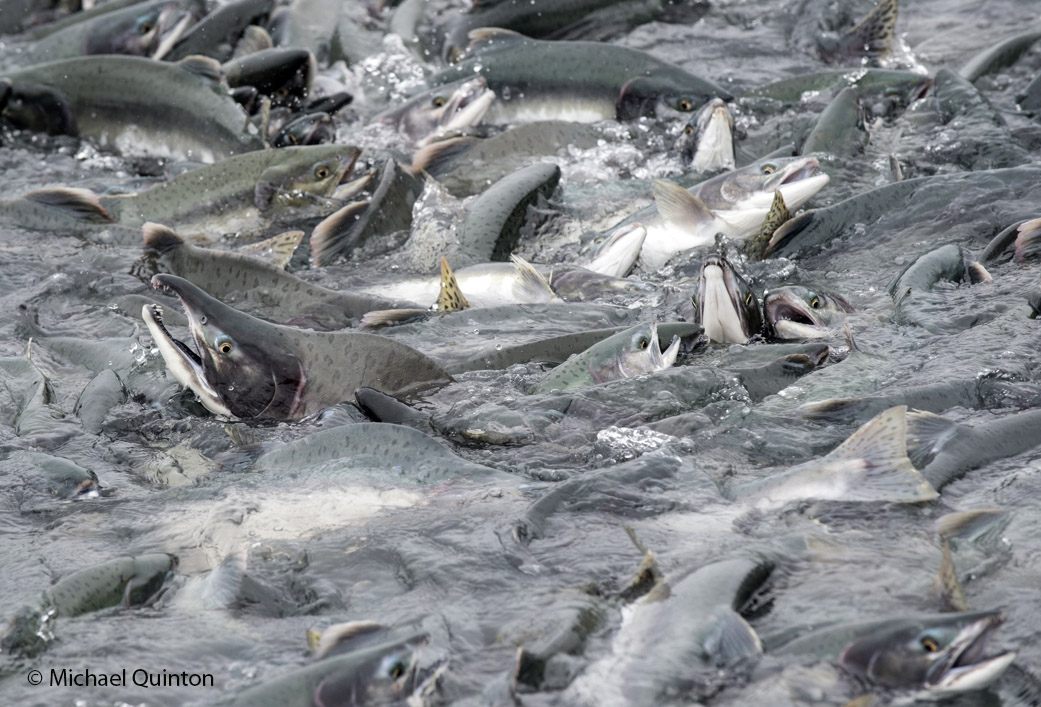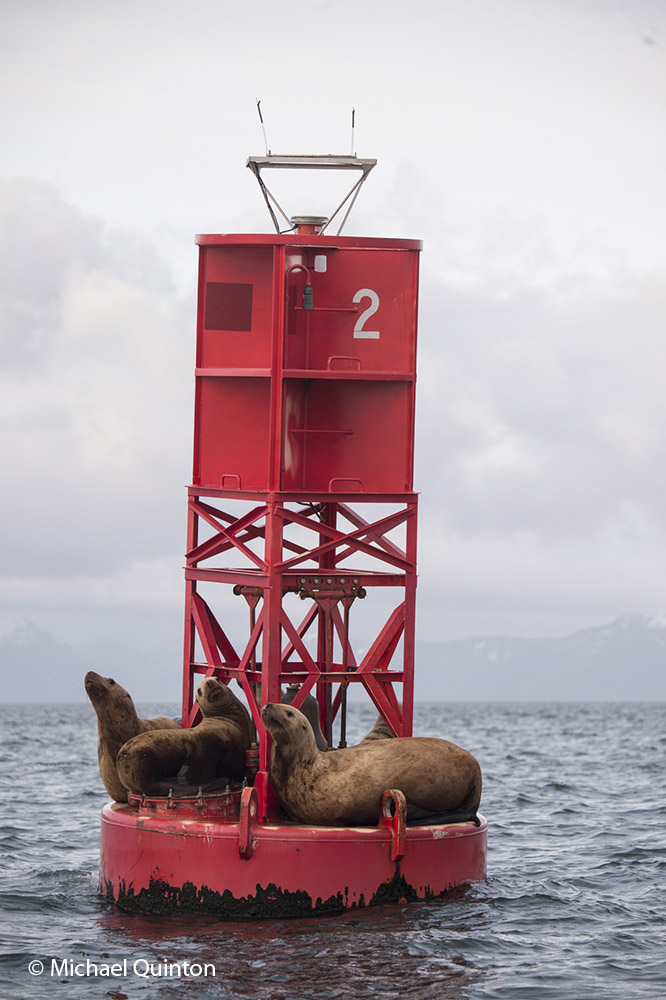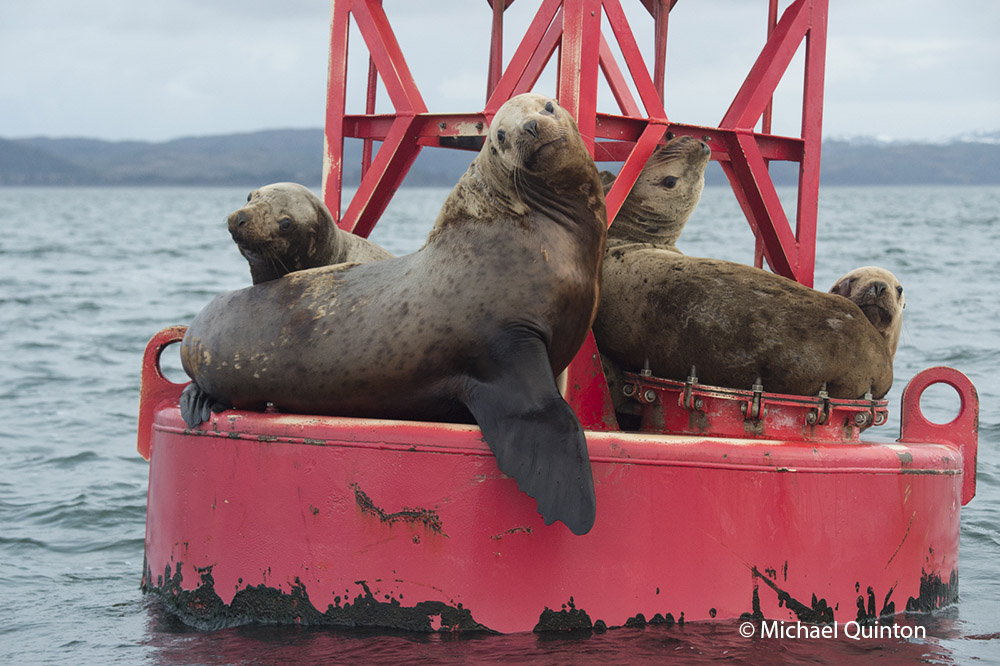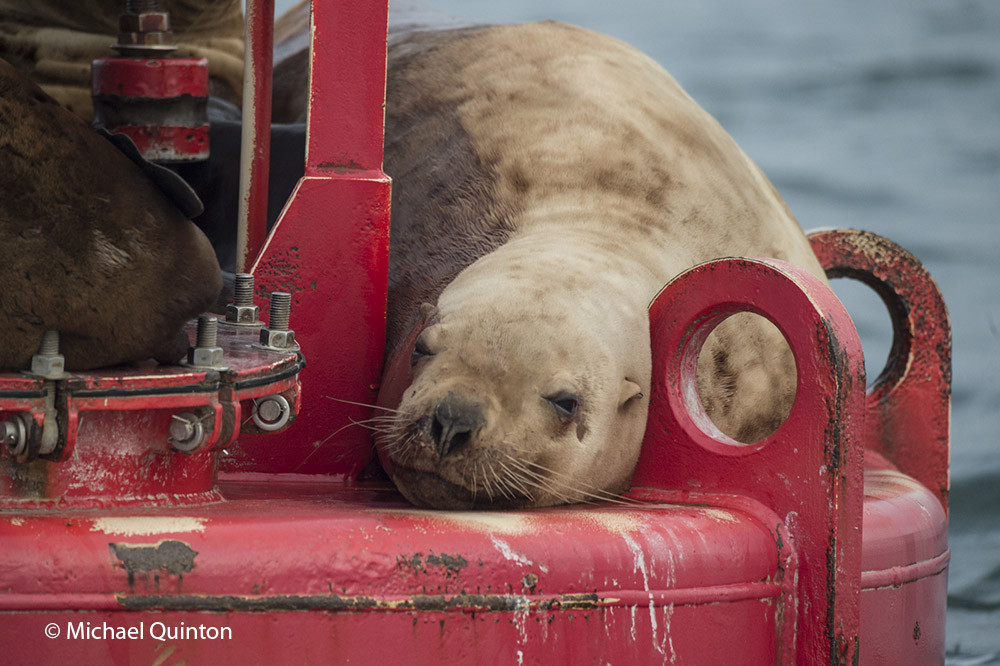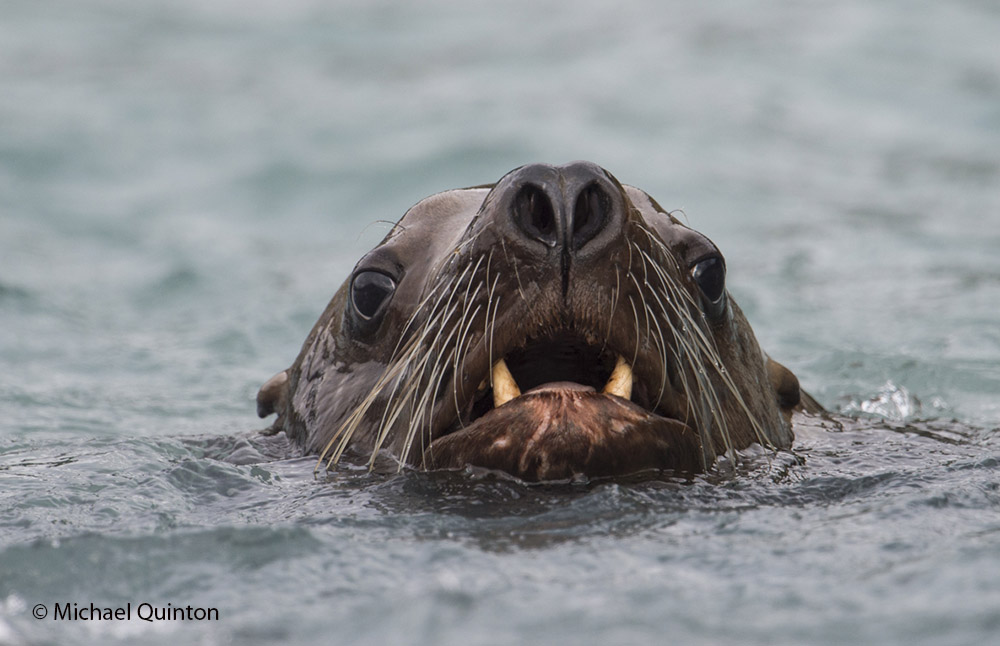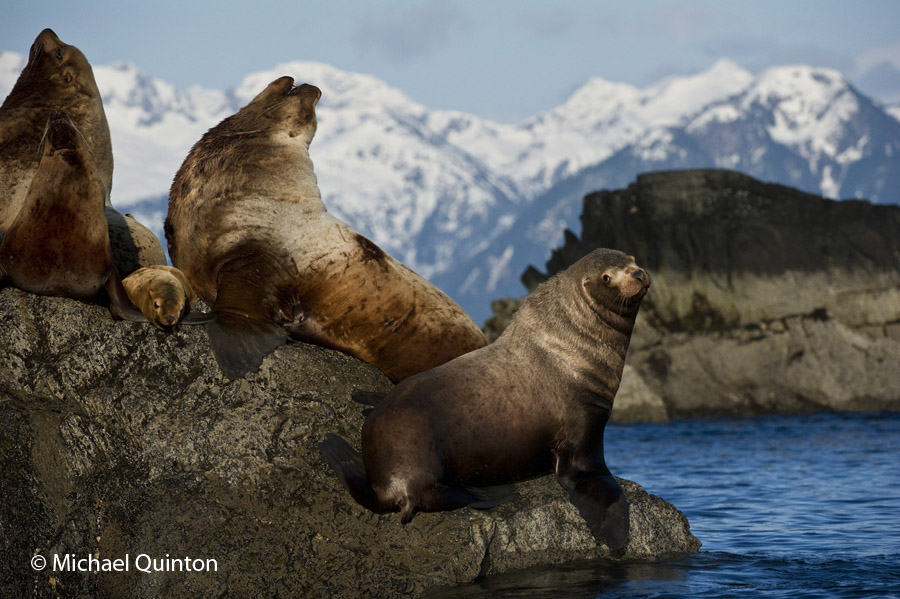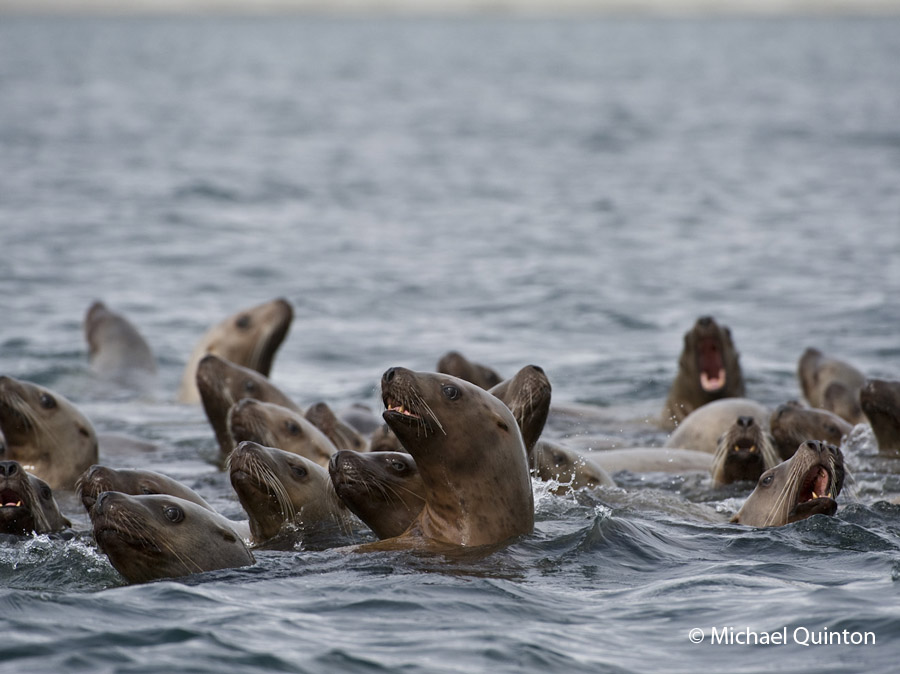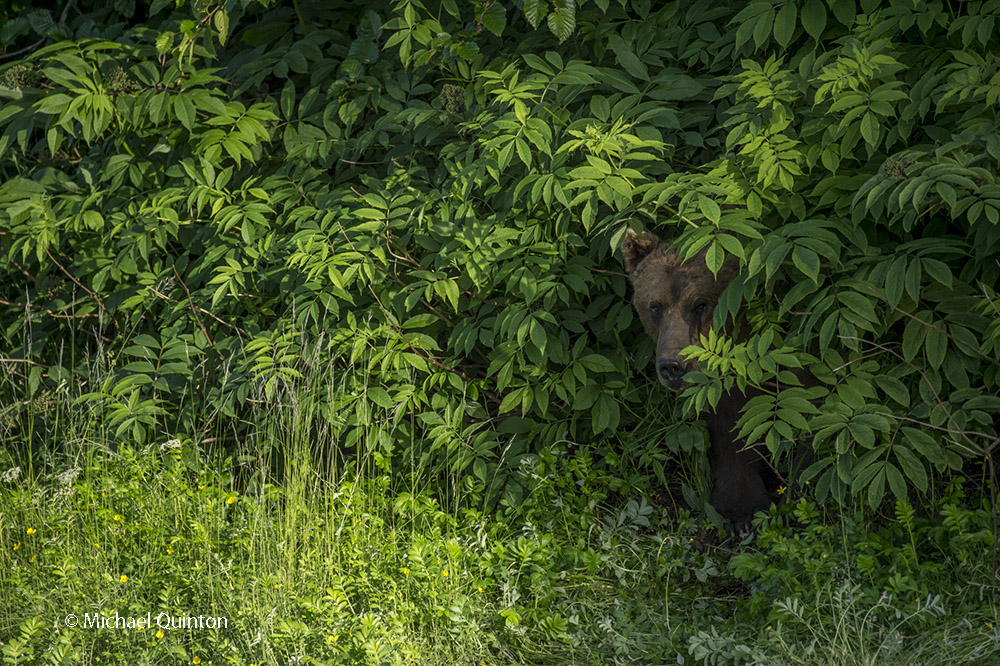 Sneaking a peek from the thicket of salmon berry and mountain ash a brown bear checks to see if the coast is clear. The bruin wants to get to the spawning pink salmon but is often kept away by a herd of nosy and noisy bad mannered tourists. When the bear does arrive, rather than giving the bear plenty of room to feed, tourists often crowd the bear hastening his departure before he has had his fill.
Sneaking a peek from the thicket of salmon berry and mountain ash a brown bear checks to see if the coast is clear. The bruin wants to get to the spawning pink salmon but is often kept away by a herd of nosy and noisy bad mannered tourists. When the bear does arrive, rather than giving the bear plenty of room to feed, tourists often crowd the bear hastening his departure before he has had his fill.
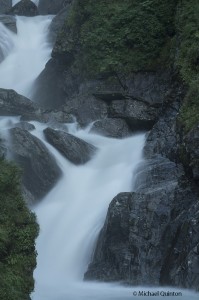
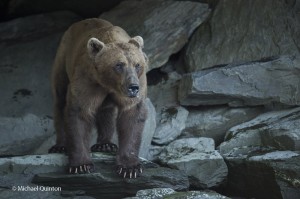
Left: Soloman Gulch
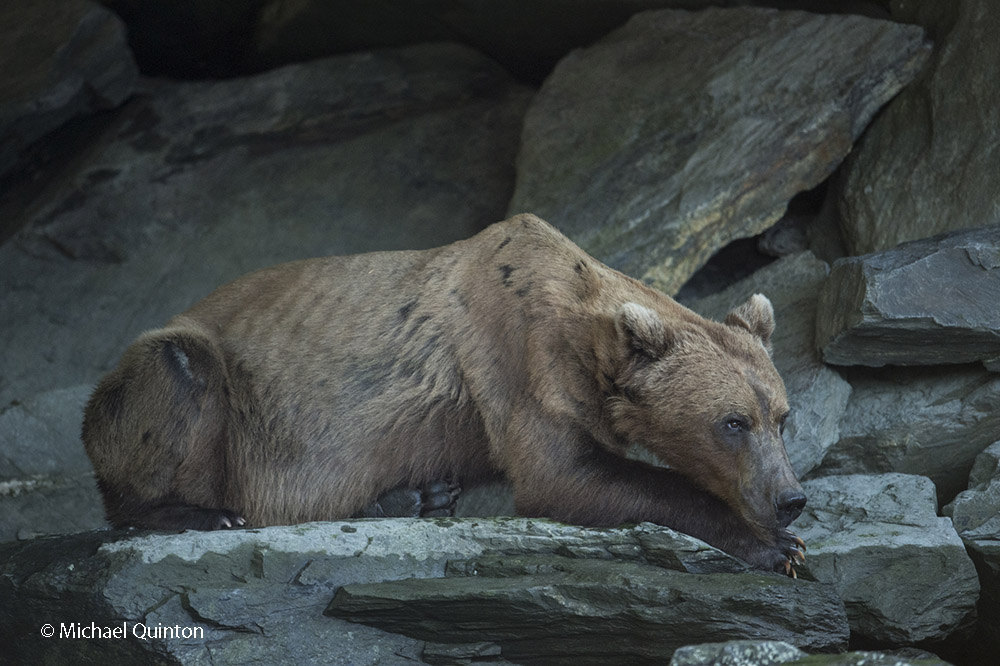 The brown bear, hungry but shy pauses as he works up the courage to approach the salmon and the tourists. This reluctance is something I share with the big brown bear.
The brown bear, hungry but shy pauses as he works up the courage to approach the salmon and the tourists. This reluctance is something I share with the big brown bear.
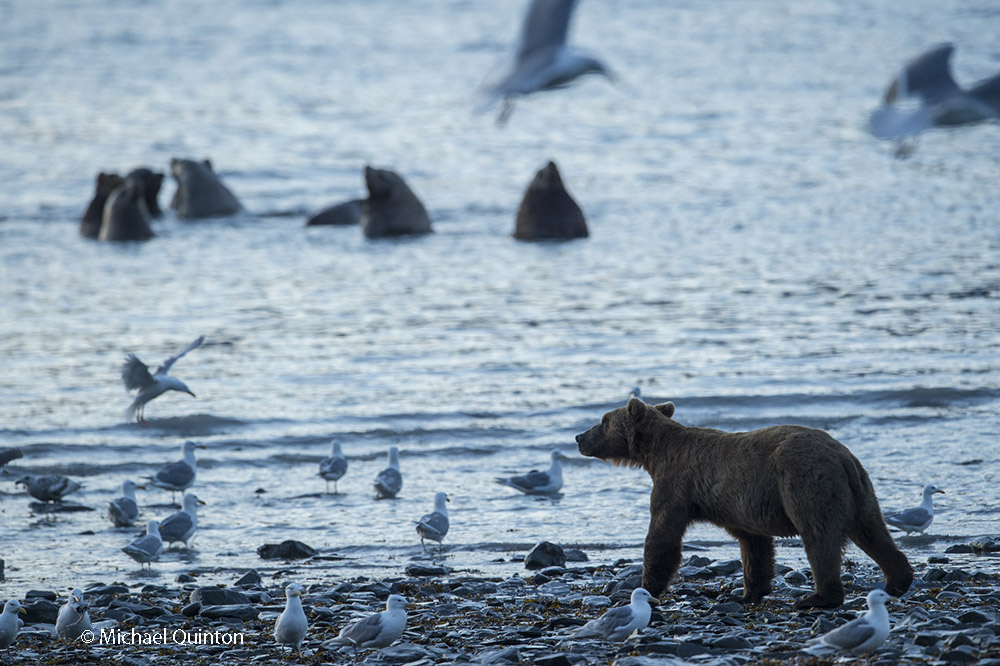 As the tide moves out exposing fish killed by feeding Stellar’s sea lions, the lanky brown bear cleans up. The Stellar’s sea lions, are afraid of the bear and move away from shore.
As the tide moves out exposing fish killed by feeding Stellar’s sea lions, the lanky brown bear cleans up. The Stellar’s sea lions, are afraid of the bear and move away from shore.
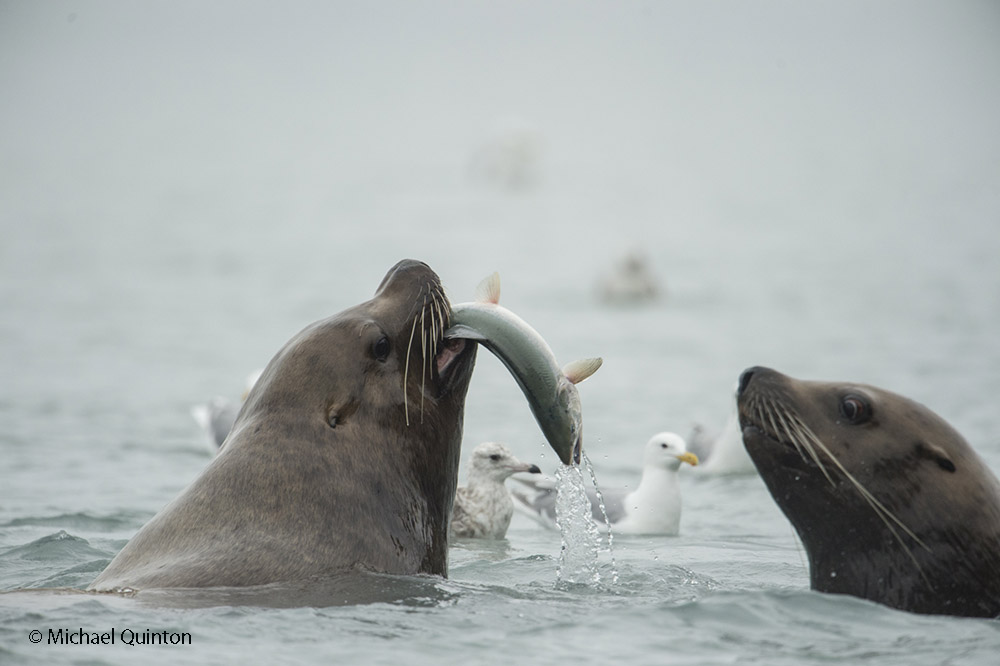 Like the brown bear, Stellar’s sea lions come to Soloman Gulch to feed on the millions of pink salmon arriving here to spawn. Over the past twenty -five years, I have witnessed an increasing number of Sellar’s sea lions spending the first week of July near the mouth of Soloman Gulch. This year I counted over one hundred sea lions together at a nearby resting site during low tide.
Like the brown bear, Stellar’s sea lions come to Soloman Gulch to feed on the millions of pink salmon arriving here to spawn. Over the past twenty -five years, I have witnessed an increasing number of Sellar’s sea lions spending the first week of July near the mouth of Soloman Gulch. This year I counted over one hundred sea lions together at a nearby resting site during low tide.
 Pink salmon by the millions arrive at the mouth of Soloman Gulch to spawn.
Pink salmon by the millions arrive at the mouth of Soloman Gulch to spawn.
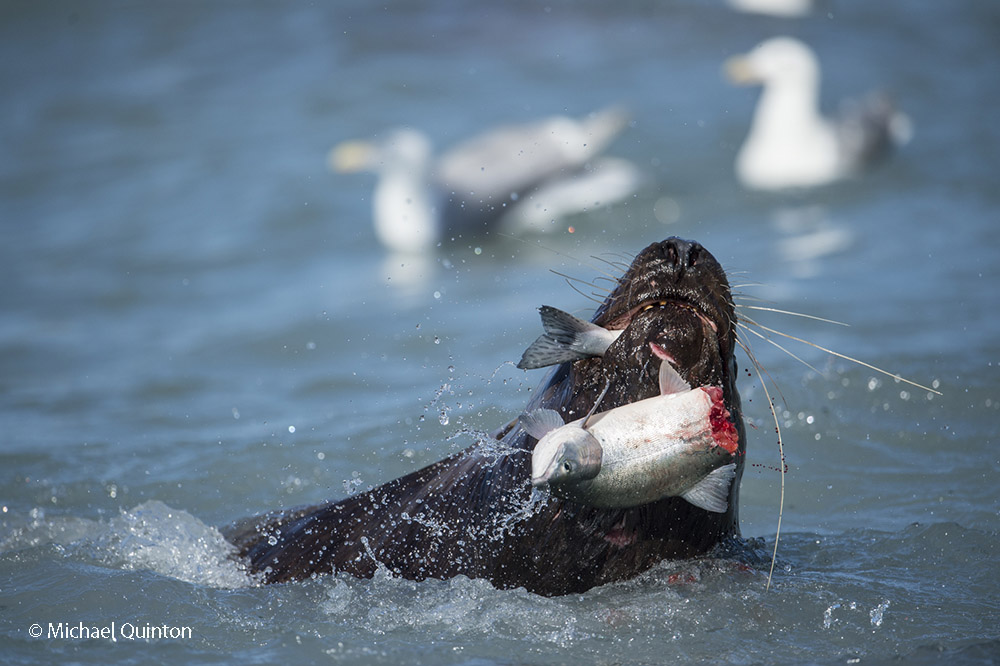
A stellar’s sea lion bites a pink salmon in half. This is a common technique used by some of the sea lions. I overheard some guy telling his wife that they bite them in half so they can swallow the fish in two pieces. But what actually is happening is a bit different. Like the bears, the lea lions soon tire of a straight diet of salmon and quickly begin to be more selective. What they want more than anything are the eggs. That’s why both bears and sea lions both often drop the males soon often they are caught. When a sea lion catches an egg-laden female salmon they may bite hard at the head end of the fish then violently jerk the fish to the side, ripping it in half and keeping the salmon head and guts along with the eggs in its mouth. The photo above shows the sea lion had the wrong end of the salmon and was left with just a tail. Visitors often comment on how wasteful the sea lions are but nothing really goes to wast. Bears, gulls, bald eagles, sea otters, harbor seals get what the sea lions leave behind, not to mention all the other hungry fish and crabs and other marine scavengers.
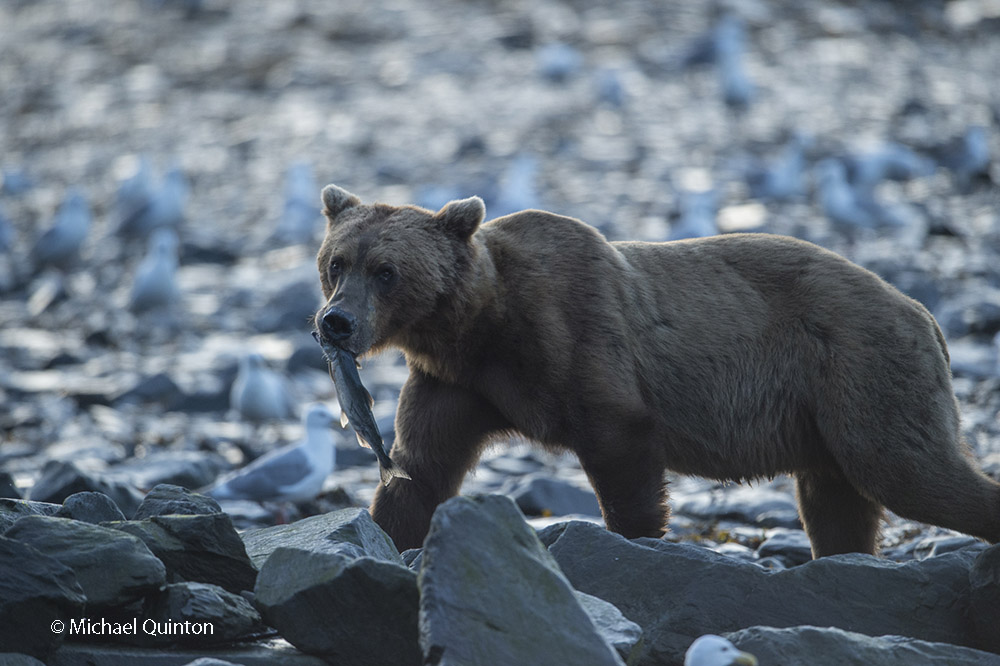 The brown bear grabs a small salmon and carries it back to the seclusion of Soloman Gulch.
The brown bear grabs a small salmon and carries it back to the seclusion of Soloman Gulch.
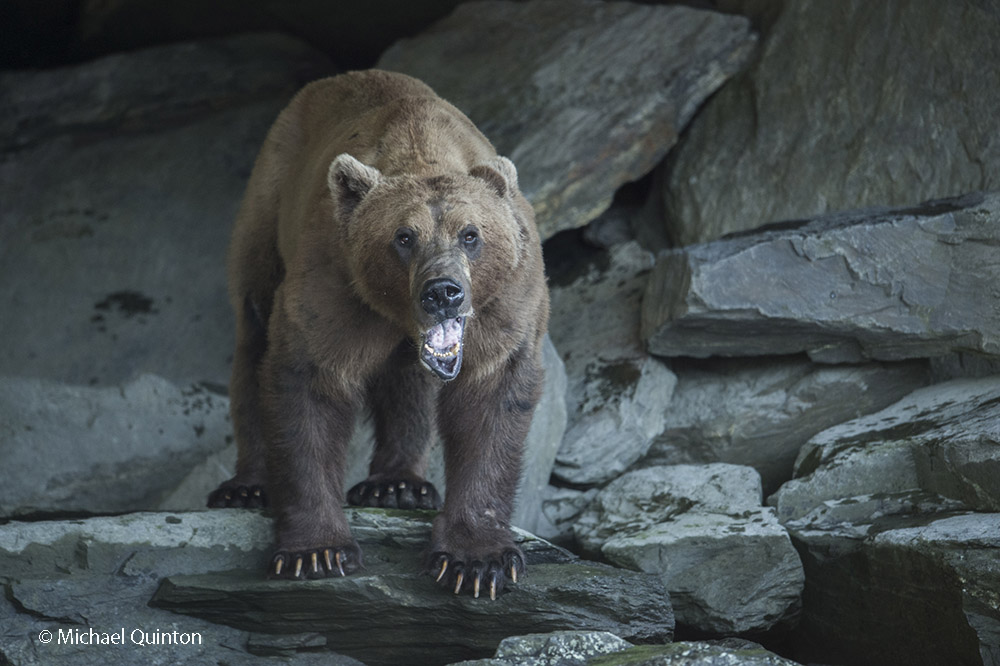
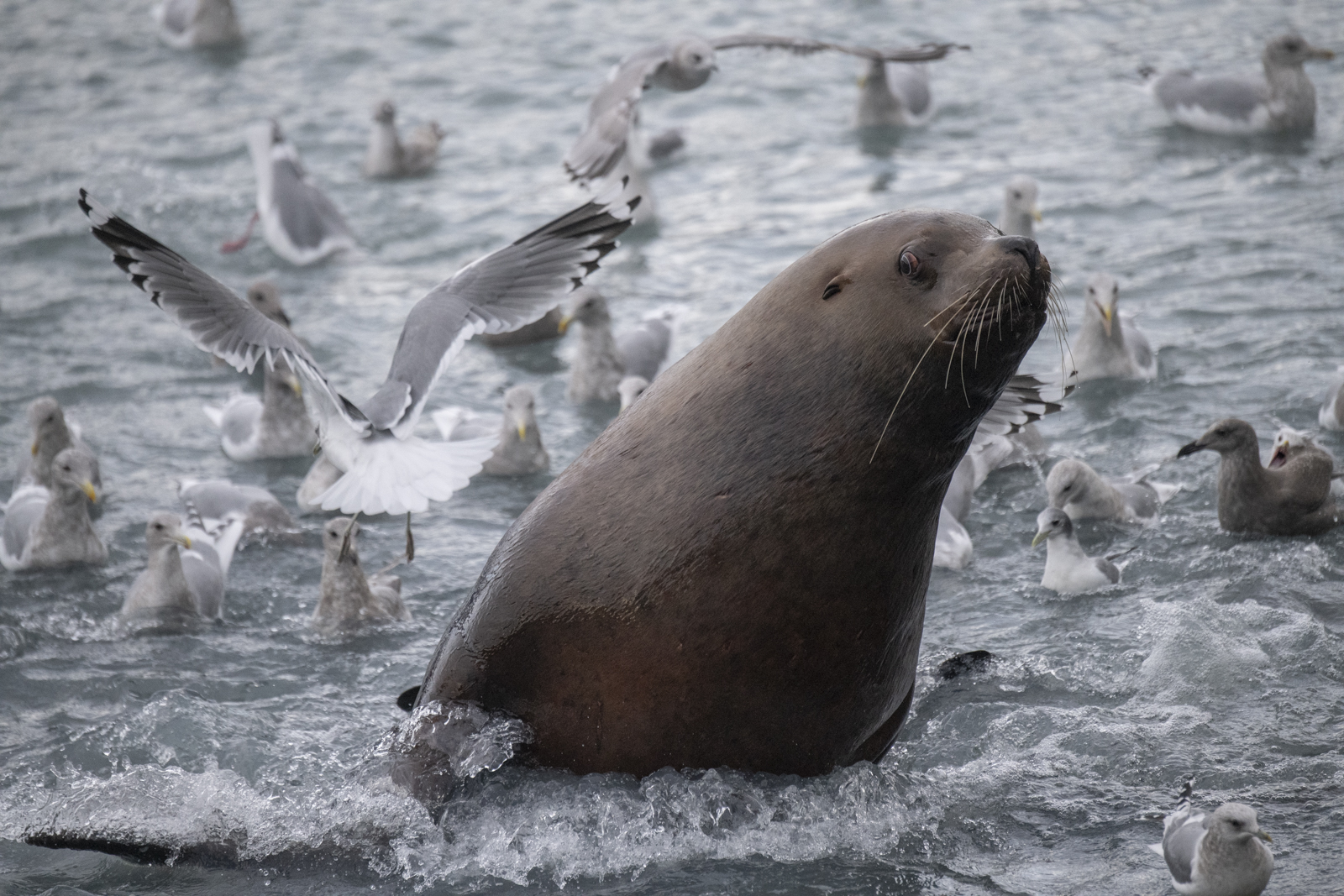 October 2021 A late-season run of coho salmon is attracting some enormous predators. At low tide, Steller’s sea lions leave the sea to follow the salmon into fresh water at the mouth of the shallow river. Some of the sea lions pick a spot to wait and watch. Some strike a bear-like pose as they watch for a salmon to swim past and then make a surprisingly quick lunge and grab the salmon. Others inch upstream with their heads underwater ready to grab any salmon within range of powerful bearlike jaws. And their appetite is Ridiculous!
October 2021 A late-season run of coho salmon is attracting some enormous predators. At low tide, Steller’s sea lions leave the sea to follow the salmon into fresh water at the mouth of the shallow river. Some of the sea lions pick a spot to wait and watch. Some strike a bear-like pose as they watch for a salmon to swim past and then make a surprisingly quick lunge and grab the salmon. Others inch upstream with their heads underwater ready to grab any salmon within range of powerful bearlike jaws. And their appetite is Ridiculous!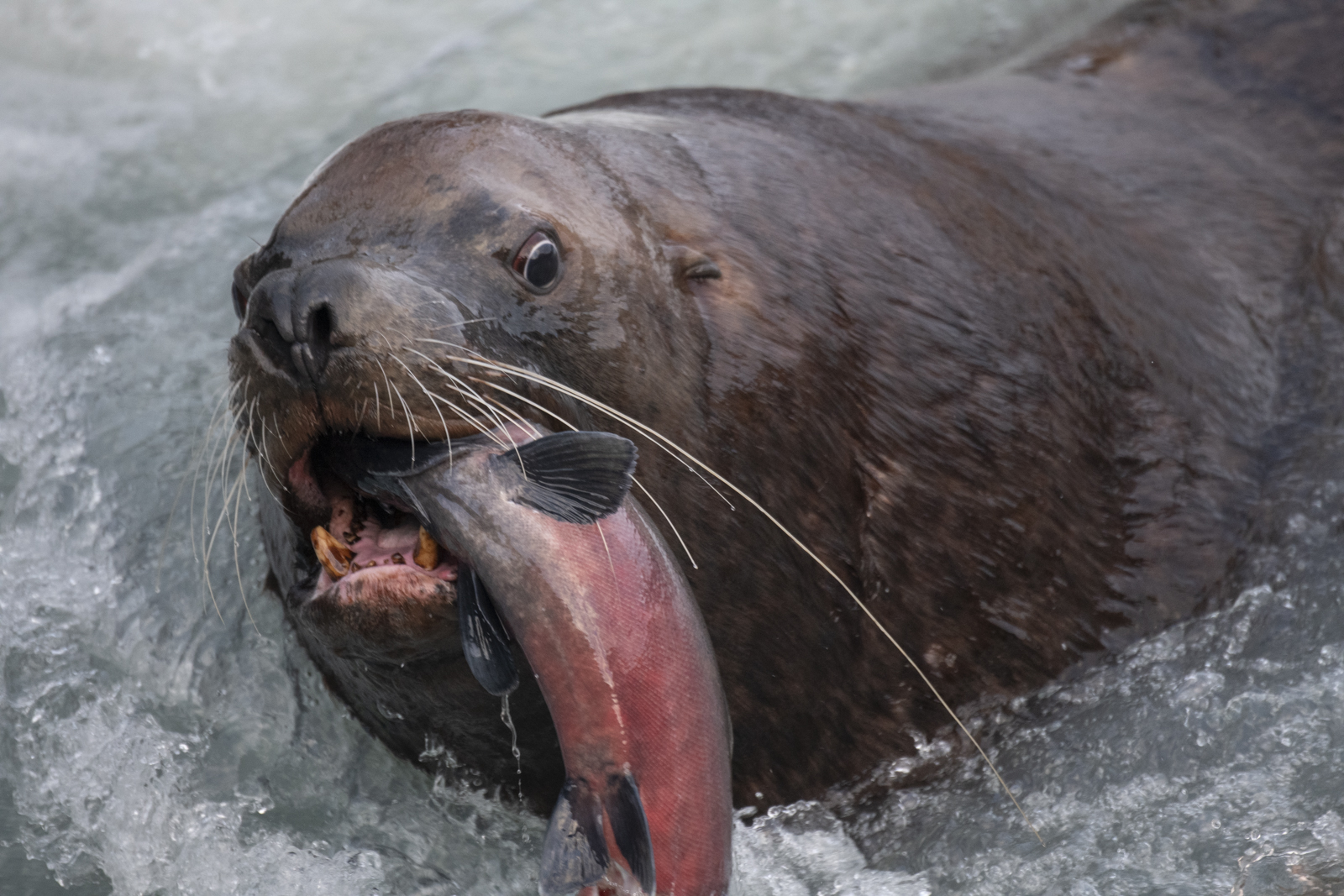 Stellar’s sea lion with spawning coho salmon.
Stellar’s sea lion with spawning coho salmon.










